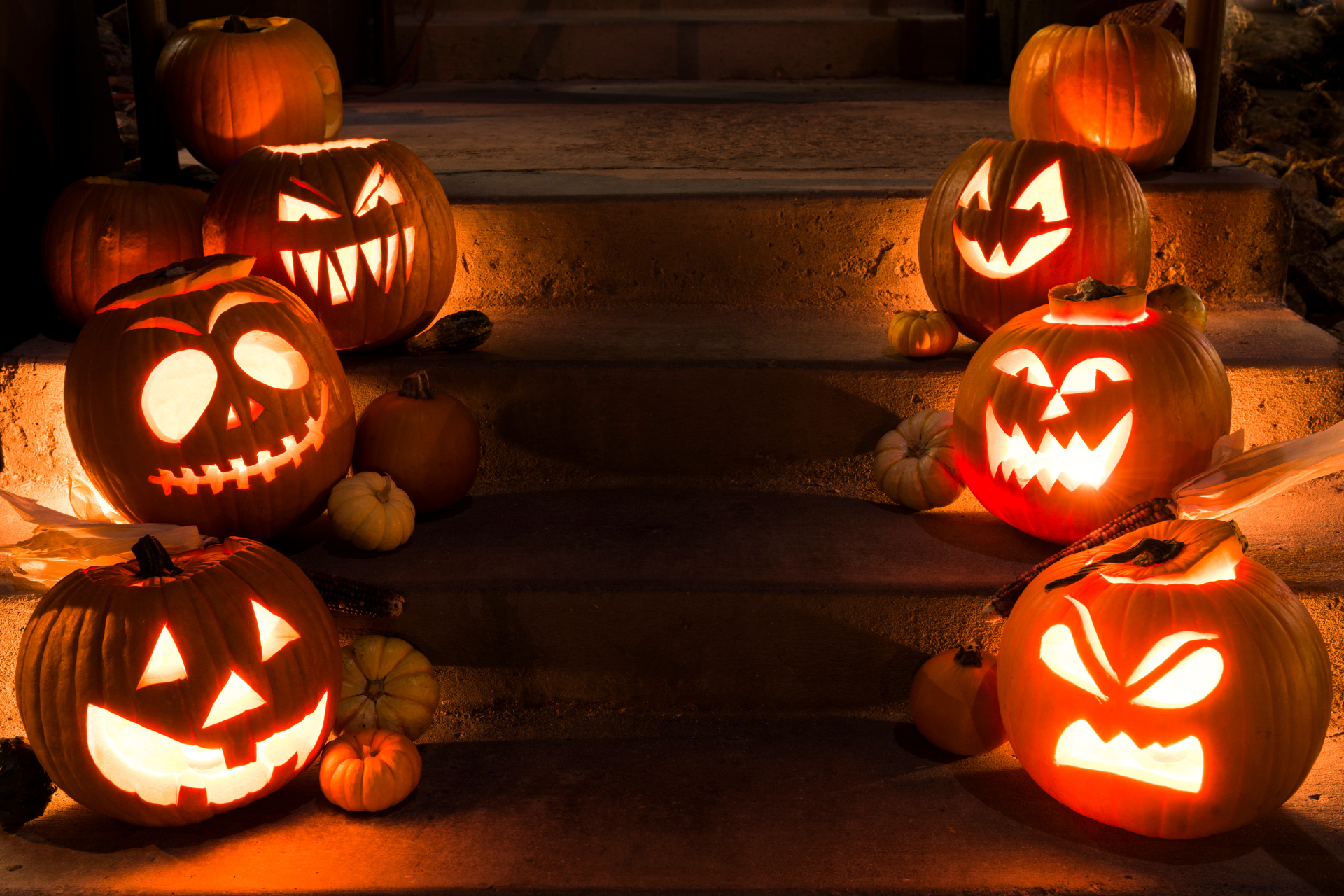This article was updated on September 4, 2024
Halloween, with its cheesy decorations, costumes, and candy, has become a widely celebrated holiday. Yet, its roots extend back over 2,000 years to the Celtic festival of Samhain, pronounced "sah-wen."
Samhain marked the end of the harvest season and the beginning of winter, a time when the Celts believed the boundary between the living and the dead grew thin, allowing ghosts and spirits to cross into the world of the living.
That's where the origin of Jack O'Lanterns and Halloween candles began.
Candle Flames and Celtic Rituals
To protect themselves from these wandering entities, the Celts engaged in a series of rituals during Samhain. They donned terrifying costumes made from animal skins and heads, lit sacred bonfires, and gathered around them to dance and chant.
These rituals were aimed at scaring away any malevolent spirits that might threaten the living. The tapers lit from these bonfires served a dual purpose, not only providing light but also symbolizing the sacred fire that would protect them until morning.
As Christianity spread throughout Europe, the church sought to replace these pagan traditions with their own religious observances. All Saints’ Day, also known as All Hallows' Day, was established on November 1st to honor Christian saints and martyrs.
The evening before All Saints’ Day—All Hallows' Eve—retained many of the traditions of Samhain, including the practice of lighting candles to ward off evil spirits and the use of costumes to disguise oneself from wandering ghosts.
Over time, these religious observances evolved into the more secular holiday we now know as Halloween. The practice of trick-or-treating is thought to have origins in medieval traditions like "souling," where the poor would go door-to-door offering prayers for the dead in exchange for food.
The Birth of Halloween Candles: The Jack O'Lantern
It's within this backdrop of ancient Celtic traditions turned “modern” Christian rituals that the origin of the Jack o' Lantern takes shape. Stingy Jack, a rather bitter and alcoholic character, took great pleasure in tricking anyone—even the Devil himself.
One fateful day in a dimly lit Irish pub, the Devil made an appearance before Stingy Jack. The Devil, crafty and cunning, offered to buy Jack a drink in exchange for his restless soul—a rather one-sided deal, to say the least.
In a clever maneuver, the Devil transformed into a coin, intending to be used for the drink. But Jack, being equally cunning, had different plans. Instead of accepting his fate, Jack trapped the Devil in his pocket, along with a crucifix he happened to have on hand.
After much pleading and bargaining, Jack agreed to release the Devil, but only under the condition that the Devil promised never to bother him again. Unwilling to be confined to a lint-filled pocket, the Devil reluctantly agreed to Jack's terms.
Exactly ten years later, as the Devil often does, he returned to claim Jack's soul for good.
Jack, ever the trickster, had yet another scheme up his sleeve. He convinced the Devil to climb an apple tree to fetch him one final snack before descending into the depths of hell.
The Devil, not known for his intellect, climbed the tree without hesitation. Seizing the opportunity, Jack carved a cross into the tree trunk, trapping the Devil amidst its branches. In desperation, the Devil promised never to come for Jack's soul again.
But Jack's fate took an unexpected turn. Heaven refused to accept him due to his lifetime of manipulation and deceit, and hell wouldn't take him because of the Devil's promise. Jack was left in a haunting limbo, condemned to wander the earth for all eternity.
The Evolution of the Jack o' Lantern
As a result of this eerie tale, around All Hallow's Eve (Halloween), the Irish began using carved-out turnips, gourds, and other root vegetables to house a lit candle. This practice was believed to ward off evil spirits and keep the ghost of Stingy Jack at bay.
It was widely held that the candle's flame must burn all night and into the morning to protect them from wandering spirits. When the 19th century arrived, and many Irish immigrants settled in the United States, they discovered that pumpkins were not only abundant but also easier to hollow out.
This discovery led to the birth of the modern version of the pumpkin jack-o' lantern, which quickly became a beloved Halloween tradition in North America.
Candles in Jack-o'-Lanterns
The practice of placing candles inside jack-o'-lanterns is an integral part of the Halloween tradition, contributing significantly to the spooky and atmospheric effect that we associate with these carved pumpkin lanterns.
The flickering candlelight casts eerie and ever-shifting shadows on the carved faces and designs of jack-o'-lanterns, creating a dynamic and suspenseful effect that enhances the overall spooky ambiance of Halloween decorations.
Even the friendliest of jack-o'-lanterns can appear menacing in the dark thanks to this captivating play of light and shadow.
Beyond their practical purpose of providing light, candles in jack-o'-lanterns are seen as symbolic protectors. People believe that the flickering candle flame wards off evil spirits and ghosts.
This belief aligns with the historical understanding that Halloween is a night when the boundary between the living and the dead is thin. The Irish tradition of lighting candles inside jack-o'-lanterns was thought to ensure that these spirits would remain at bay throughout the night.
4 Halloween Candles Inspired by the Jack O Lantern Story
If all this talk of Halloween candles and traditions has you itching to get your hands on some fall candles we have the perfect round-up for you!
Firewood Candle
Key Notes: Gilded Spices, Fir Needle, Smokey Vetiver
Mimic the bonfires held in ancient days with this smoke-smelling candle. Bring a bit of old lore to your living room as you listen to this candle crackle and pop like the Samhain fires of old.
Pumpkin Patch Candle
Key Notes: Pumpkin, Butter, Vanilla
This candle will have you walking the fields of pumpkin patch from the comfort of your cozy reading spot. And, after reading this blog, you have a whole new appreciation for why you need to carve a pumpkin and light a fall candle.
Golden Amber Candles
Key Notes: Amber, Vanilla, Orange Zest
Like the glow of a Jack O Lantern on All Hallows Eve, this candle will have you feeling comforted and warm. It’s the perfect addition to your spooky time festivities.
Pumpkin Spice Candles
Key Notes: Orange Peel, Ground Nutmeg, Ginger
What better way to use up the innards of your jack-lantern than to make pumpkin pie? Too much work? We get it, just burn this delicious pumpkin spice candle instead.
Other Halloween Candle Superstitions
In many cultures, it was believed that candles could reveal the presence of spirits or even predict the future. During Halloween, when the boundary between the living and the dead was thought to be the thinnest, people would practice divination.
People would light a candle in a dark room and focus on the flame. The way the flame flickered or danced was believed to hold prophetic meaning. A steady flame was a sign of peace and protection, while a flickering or dimming flame could indicate the presence of a spirit or an upcoming challenge.
Some even practiced ceromancy, a form of fortune-telling where melted wax from a candle would be dripped into water, and the shapes formed by the wax were interpreted to predict future events or answer questions.
Candle-related superstitions continue to add an element of mystery and intrigue to modern Halloween celebrations—the age-old belief that light can both guide and protect us from the unknown is still alive and well.
Next time you light a Halloween candle, keep an eye on the flame—you never know what it might be trying to tell you!
Stock Up On Candles In Time For Spooky Season
The next time you light your favorite Kalamazoo Candle, remember that it might be acting as a guardian against mischievous spirits. These candles not only smell amazing but also serve as your tiny, unassuming bodyguards!
Who would have thought? They are so much more than just home decor. As Halloween approaches and the veil between worlds thins (or so they say), now’s the perfect time to stock up on these Halloween candles.
We hope these candles help you have a spooky and safe Halloween.










